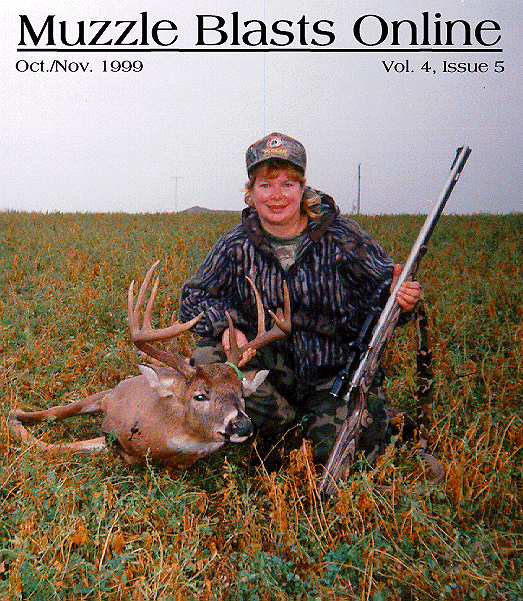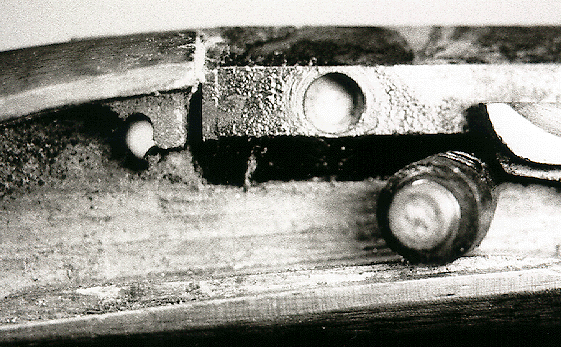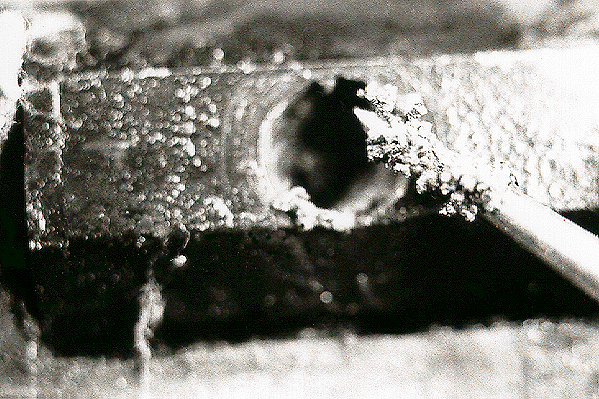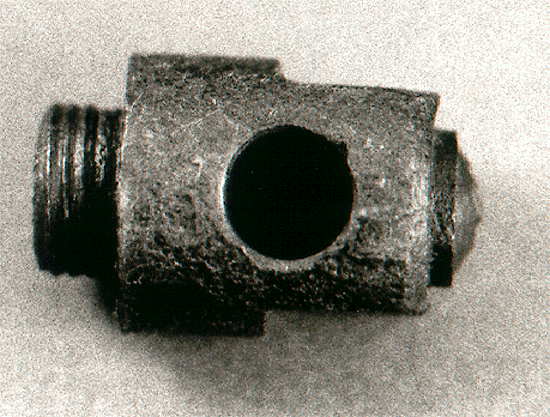|
Muzzle Blasts Online |
|
...for the muzzleloading enthusiast |
|
The muzzleblasts.com domain, subdomains, content, etc., are neither affiliated with the NMLRA nor its paper magazine Muzzle Blasts |
|
Muzzle Blasts Online |

|
|
|
|
|
|
A Note On Safety

|
|
The breech and drum of this rifle were completely obstructed by a mud-dauber nest. Note also the corroded condition of the breech area, including prior neglect. |
The advantages of the primitive firearms season and the need to comply with its equipment regulations have resulted in the resurrection of many muzzleloading rifles that have long lain dormant. Some of these rifles, whether through neglect or circumstance, have been rendered unsafe, particularly with the heavy loads normally used in hunting. A case in point is an Italian-made percussion rifle that was recently brought to me for repair. Insects commonly called "mud-daubers" in the South (actually square-headed wasps of the genus Trypoxylon) had invaded the breech and built a nest that completely obstructed the drum and breech (fig. 1). The mud-dauber nest is composed commonly of clay and grit that has a granular consistency (fig. 2). In this case, the nest material extended for about two inches up the barrel.

|
|
The clay of the nest is corrosive to metal; its granular composition (as shown sticking to the scribe point) includes sandy soil particles, which are also abrasive to the bore. |
Some suggestions for the prevention of insect damage to rifles are:
- store your firearms in a closed, dry room or closet (preferably with limited access) in your house rather than in an outside garage or storage shed;
- check your firearms periodically to determine if insects such as mud-daubers have decided to make their happy home in your favorite rifle;
- if you must store your muzzleloaders where they are potentially accessible to nest-building insects, lubricate the bores well with a high quality anti-rust product such as LPSI ® or TAL-1 ®, and employ the old strategy of plugging the bore with a tompion or canvas bore cover.

|
|
This drum has lost most of its threads for both nipple and barrel. |
The author acknowledges the technical advice of Dr. Robert Bellinger, Department of Entomology, Clemson University, in the writing of this manuscript.